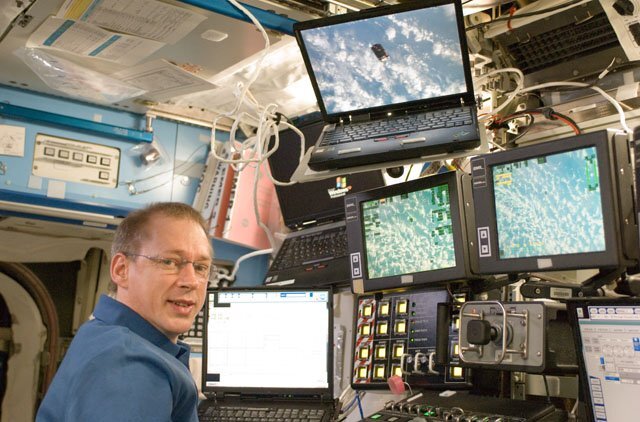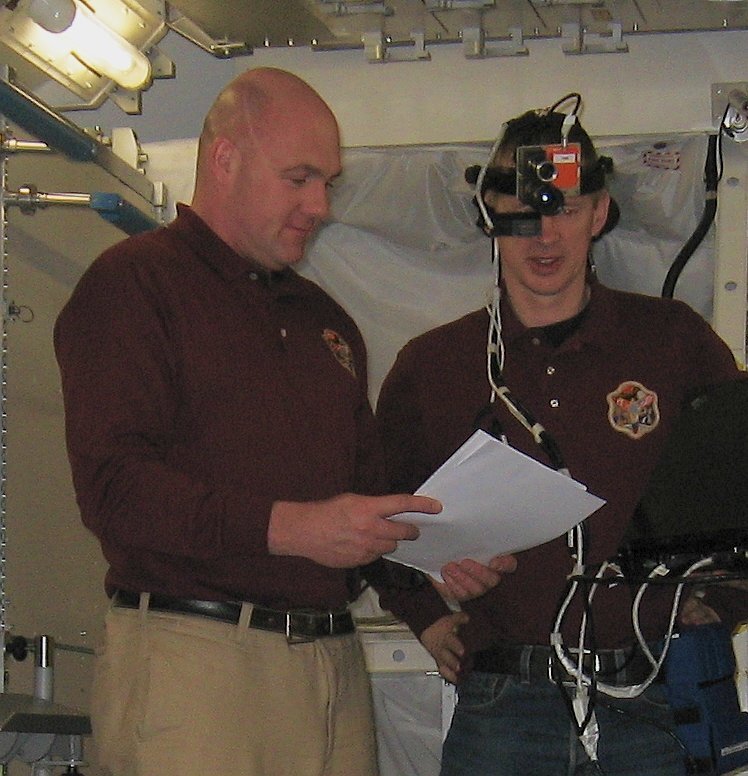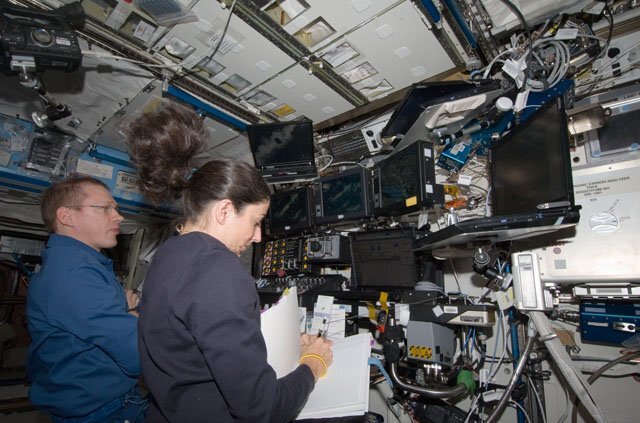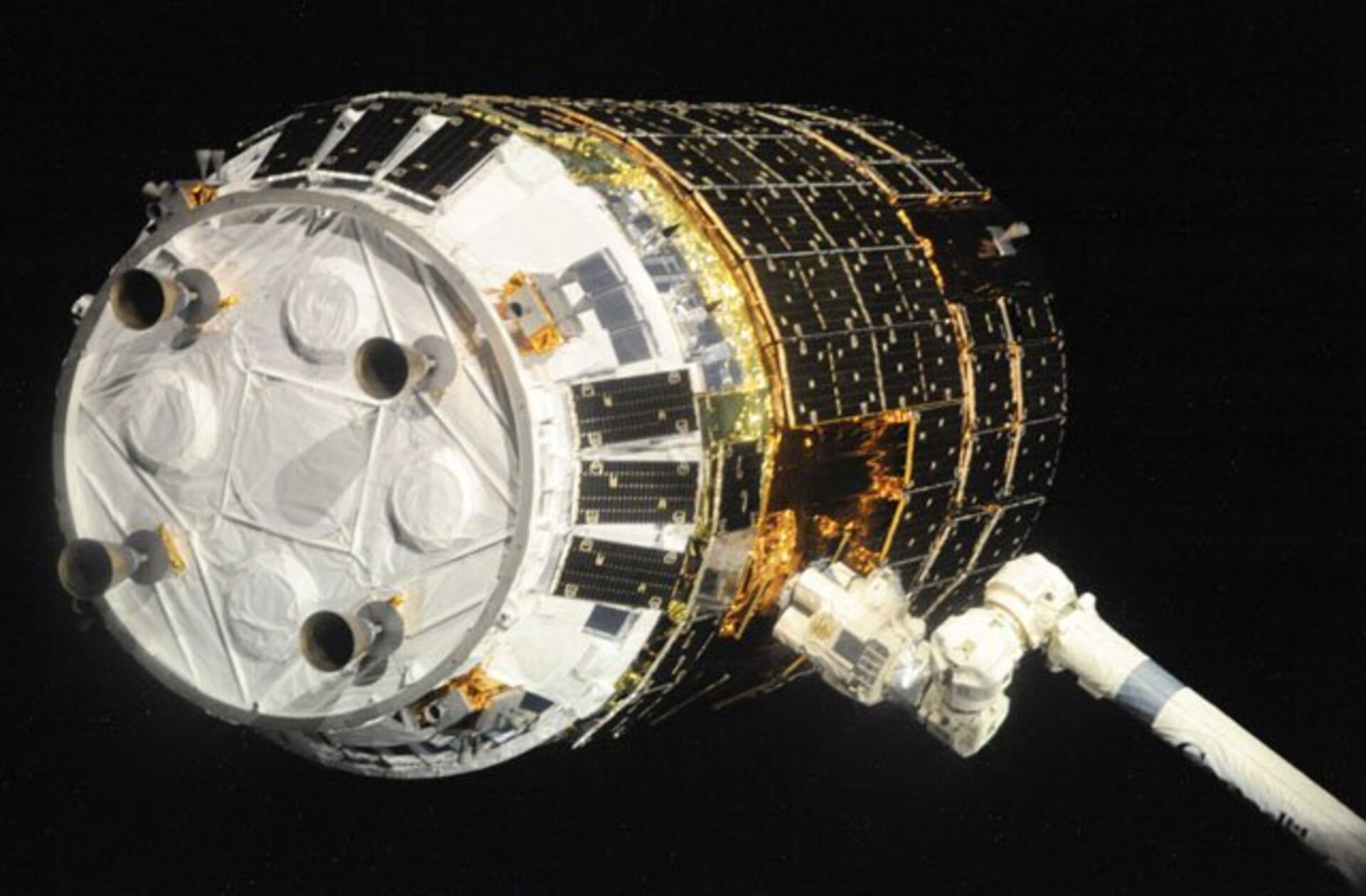Frank De Winne's diary – Thursday 24 September 2009
The unmanned Japanese H-II Transfer Vehicle (HTV-1) arrived at the ISS last Thursday. Together with Bob Thirsk, I assisted Nicole Stott with the grappling of this cargo spacecraft using the Station's robotic arm and then with the mating of HTV with Harmony.
Next I helped Thirsk prepare HTV so the crew could enter. I also helped to unload and transfer cargo across to the ISS. Today I will use the Japanese robotic arm to attach some experiment payloads to the external facility on Japan's Kibo laboratory. I will tell you how that went in next week's diary entry.

I have also demonstrated the WEAR technology this week. WEAR stands for WEarable Augmented Reality – you can safely say that this experiment from Space Applications in Zaventem (Belgium) opens up fascinating possibilities.
WEAR has a partially see-through video screen positioned in front of the eyes – it is worn on your head – which is voice-operated. We can see information on the screen that's relevant to the task we are carrying out, with video, images and text. Because the screen is see-through we can still see the real world around us. Here in space, we can use the WEAR system to consult procedures and handbooks, keeping our hands free to work on complex equipment.

Sensors, combined with object recognition, enable WEAR to determine the exact location and orientation of the astronaut so that contextual information can be displayed. Other possibilities of WEAR include recording audio and video notes; it also incorporates barcode reading technology.
I tested WEAR on the ground before my spaceflight, but this was the first test of the technology in space. WEAR also has earthly applications, such as in architecture.

Another interesting activity is the SOLO, or Sodium Loading in Microgravity, experiment in the field of human physiology. This is looking at whether there is a connection between the intake of salt and the breakdown of bone in microgravity. Is seems strange, but there are indications that such a link does actually exist. The reduction in bone mass in astronauts during a long-duration space mission is an extremely complex phenomenon that is possibly influenced by our diet here in space.
For the SOLO experiment I am eating specially prepared meals some of which are very low in salt and others that have a very high salt content (compared to the normal diet on the ISS). For this experiment I also have to regularly measure my mass and take urine and blood samples, these are frozen and will later be taken down to Earth for analysis in the lab.




